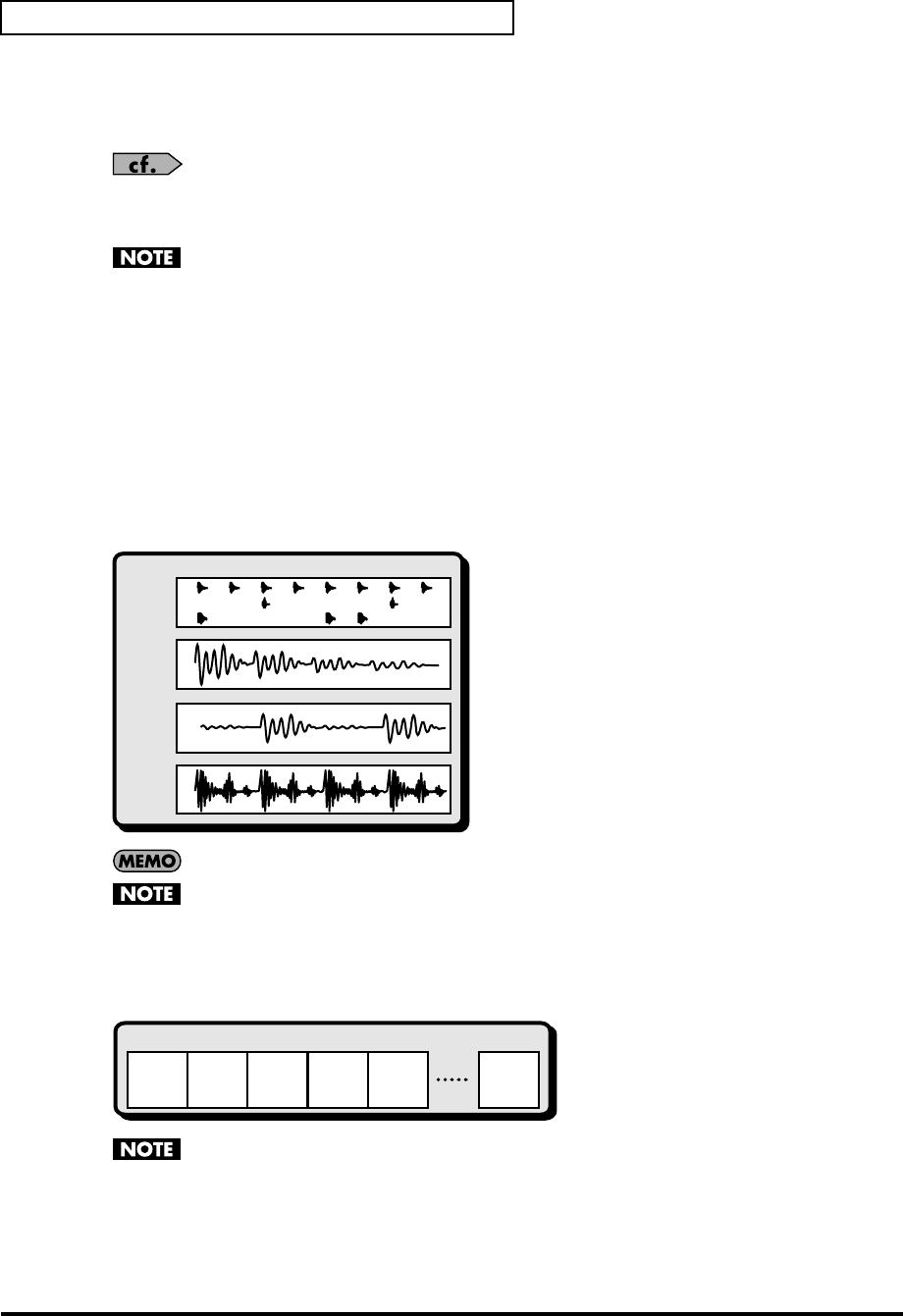
14
An Overview of the SP-606
What Are Pad Banks?
A group of sixteen samples assigned to the pads of the top panel are collectively called a Pad Bank.
The SP-606 has thirty-two pad banks, letting you use a total of 512 samples.
Refer to “Switching Pad Banks” (p. 23).
About Pad Banks 1–8
When you sample into these banks, the samples will be saved in internal memory.
When the SP-606 is shipped from the factory, samples are already loaded into pad banks 1–4. Since
these samples are protected so that they will not be erased accidentally, you will be unable to edit or
delete them. If you want to disable protection for these samples, disable the pad bank protect setting
(p. 31).
About Pad Banks 9–32
When you sample into these banks, the samples will be saved on a memory card.
What Are Patterns?
A pattern consists of 1–32 measures of performance (sequence) data that specifies the timing at which samples
will be played. Each pattern contain four “parts” (tracks), in which separate performances can be recorded.
You can select and play different patterns in succession, or create a song by specifying the order in which you
want patterns to play.
fig.0G-4
A pattern can be up to 32 measures long.
The pattern simply specifies the timing at which the samples play; it does not contain the samples
themselves. This means that if you change the sample, the playback result will also change.
What Is a Song?
On the SP-606, an arrangement of multiple patterns in a desired playback order is called a Song.
fig.0G-5
The song simply specifies the order in which patterns will play; it does not contain the sequence
data of the patterns themselves. This means that if you edit a pattern, the song playback will be
affected.
Pattern
Drum
Part
Bass
Part
Inst 1
Part
Inst 2
Part
(Hi-hat)
(Snare Drum)
(Bass Drum)
Song
Melody
A
Intro Melody
B
Melody
A
Melody
B
Ending
Pattern Pattern Pattern Pattern Pattern Pattern
SP-606_e.book 14 ページ 2004年6月21日 月曜日 午前10時8分


















